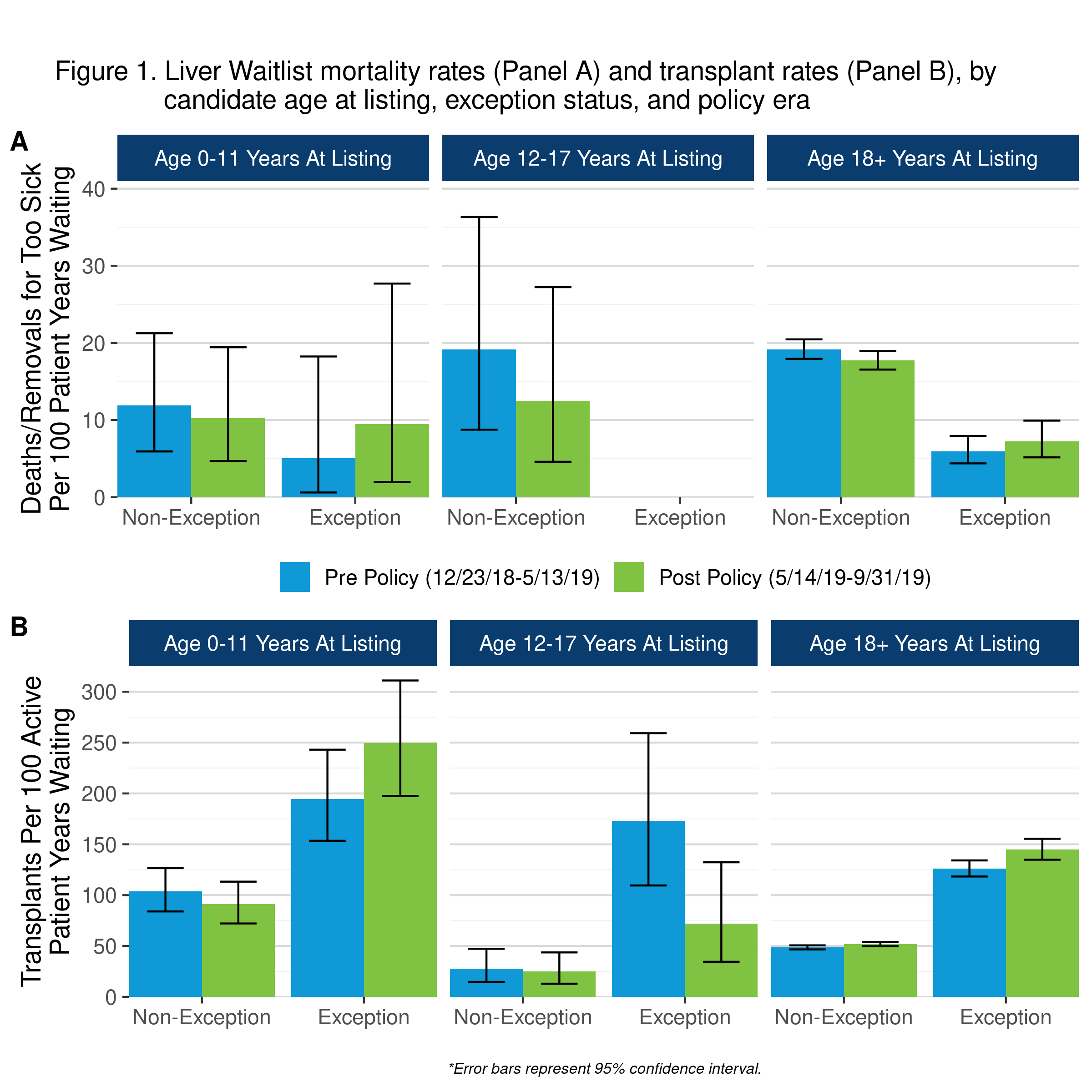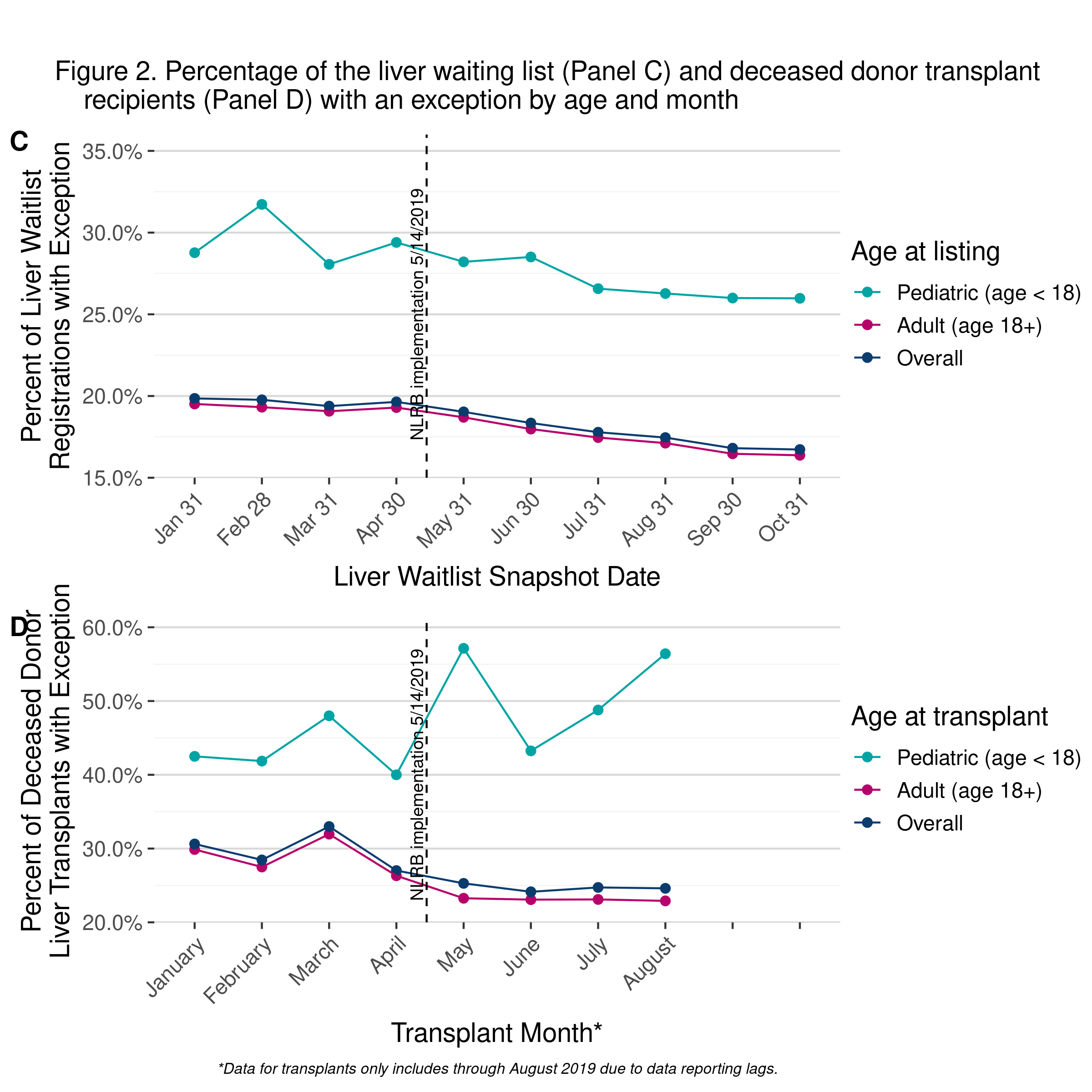An Early Look at the National Liver Review Board
1United Network for Organ Sharing, Richmond, VA, 2University of California - San Francisco, San Francisco, CA, 3Texas Digestive Disease Consultants, Dallas, TX, 4Mayo Clinic, Rochester, MN
Meeting: 2020 American Transplant Congress
Abstract number: C-248
Keywords: Liver, Liver transplantation, Monitoring, Public policy
Session Information
Session Name: Poster Session C: Non-Organ Specific: Public Policy & Allocation
Session Type: Poster Session
Date: Saturday, May 30, 2020
Session Time: 3:15pm-4:00pm
 Presentation Time: 3:30pm-4:00pm
Presentation Time: 3:30pm-4:00pm
Location: Virtual
*Purpose: On May 14, 2019, the National Liver Review Board (NLRB) was implemented, establishing a national structure for liver exceptions comprised of three specialty review boards. The goals were to create a consistent approval system, and to address the variability in exception approvals and scores of patients with the same diagnoses between OPTN regions.
*Methods: Liver exception requests submitted to the Regional Review Boards and NLRB between 12/23/2018-5/13/2019 (pre era) and 5/14/19-9/30/2019 (post era) are used. Liver waitlist registrations ever waiting during these policy eras, and snapshots of the liver waitlist each month during 2019 through October are used. Deceased donor liver transplants are divided into pre (1/24/2019-5/13/2019) and post (5/14/2019-8/31/2019) policy eras. Chi-square and Kolmogorov-Smirnov tests assess differences between eras.
*Results: The largest volume of requests have been seen by the adult hepatocellular carcinoma (HCC) board (40%), followed by auto approvals (30%) by the system. This proportion of auto approvals is significantly higher than the 24% pre-policy (p<0.001) and the average time for reviewers to resolve cases is almost a day faster than pre-policy (4.89 vs 5.81 days). Waitlist mortality rates have increased and transplant rates decreased for exception candidates; however, the relationships with rates of non-exception candidates have not changed (Figure 1). There has been a decrease in the percentage of both the waitlist and transplants with exceptions in the post-policy era (Figure 2). The median score at transplant (MTS) for recipients with exceptions has decreased from 29 to 28 post-policy (p<0.001). The MTS for non-exception recipients of 29 has not changed.
*Conclusions: While the adult HCC board most often reviews exception requests, an increasing percentage of forms are auto approved by the system, decreasing the burden on reviewers. Reviewers are also resolving cases quicker. The rate of exception approval is lower thus far under NLRB, is continuing to increase. Exception candidate priority relative to non-exception candidates has begun to decrease, as has the MTS for exception candidates.
To cite this abstract in AMA style:
Noreen S, Hirose R, Trotter J, Heimbach J. An Early Look at the National Liver Review Board [abstract]. Am J Transplant. 2020; 20 (suppl 3). https://atcmeetingabstracts.com/abstract/an-early-look-at-the-national-liver-review-board/. Accessed July 2, 2025.« Back to 2020 American Transplant Congress


